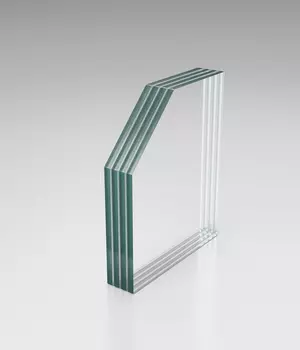Blast Resistant Classes
Protect against blasts, as tested to the glass standard EN 13541 for resistance classes ER1 through ER4 (S/NS) and system standard EN 13123-1 and 13123-2.
Blast Resistant Classes
Blast-resistant glass is designed to achieve an ideal combination of stiffness and compressive strength of glass with the plasticity and energy-absorbing properties of polymer interlayers such as PVB. The designation Classes ER1, ER2, ER3, or ER4 depends on the corresponding amount of explosive pressure it is tested to withstand during simulations of an explosive detonation in a controlled shock-tube test mechanism. After testing, glass should remain in the test frame to prevent fragments from harming people on the protected side. Glasses can be classified as splintering or non-splintering. The non-splintering option means that, even in the event of an attack, there is less risk of injury to those in the immediate vicinity if the glass is broken: it does not splinter into sharp fragments but remains bonded to the interlayer. If there is no danger of injury to those nearby, the splintering option is a cost-effective alternative.
Did you know?
A shock wave from an explosion can transform standard glass into deadly projectiles. Blast-resistant glass is designed to be flexible. It remains in its tested frame by absorbing the force of blast waves according to its specific blast resistance classification.
Blast Resistant Class Solutions
VETROGARD Blast
Multi-laminated glass resisting blast waves of explosive materials
Related Classification
Bullet Resistant Classes
Protection against bullets as tested to glass standard EN 1063 for Classes BR1 to BR7 (S/NS) + SG1/SG2 (S/NS) specific to shotguns and the system standard EN 1522 and EN 1523 for Classes FB1 to FB7 (S/NS).
Attack Resistant Classes
Protection against manual attack, as tested to the glass standard EN 356 to achieve Classes P6B to P8B and the system standard EN 1630 for Classes RC1 to RC6.
Request a quote
To best support you on your quote request, we’ll need some basic information. Simply fill out the form and we’ll get back to you.

Contact Us
Whether you are looking for specific information about our solutions or advice for a project, we would be delighted to talk to you.
